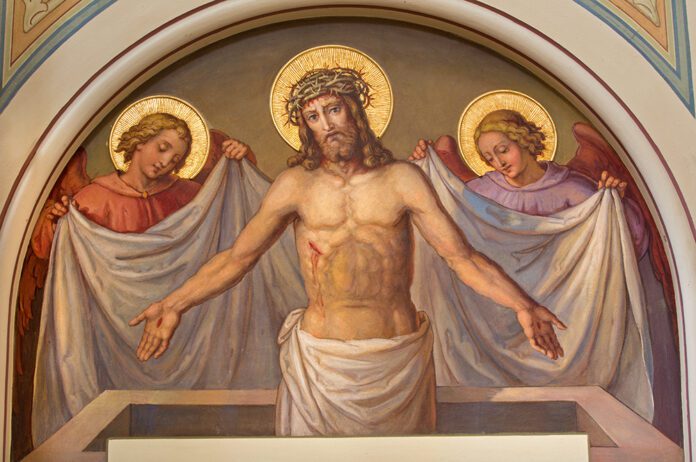I recently watched the Disney live action remake of Cinderella from 2015 starring Lily James, Cate Blanchett, and Richard Madden. It was certainly not my first choice of movie, but it was providential that my wife suggested the film on a Saturday evening after the kids were in bed. Staying true to the original Disney animated film from the 1950s, this remake differed only slightly, but in a way that made it more – dare I say – Christian.
Everyone knows the basic story of Cinderella: A girl/young woman is orphaned and left in a family of her rude stepmother and stepsisters who treat her as little more than a slave. When the King calls for a royal ball for the whole kingdom to attend in order to find a wife for his son the prince, Cinderella is allowed to go as long as she gets all of her chores done. She completes all of her tasks and even has something to wear to the ball when her stepmother and sisters tear her dress apart right before it is time to leave. Left in a heap of tears and rags, a fairy godmother appears, gives her a dazzling dress made from rags, a coach made from a pumpkin, and glass slippers. Unrecognizable Cinderella is sent off to the ball with a sharp deadline to return by midnight when everything goes back to the way it was. At the ball, the prince is enraptured with Cinderella and falls in love, but Cinderella runs off at midnight, leaving behind only a glass slipper by which to find her. The prince then scours the kingdom, and despite interference from the stepmother, finds that Cinderella’s foot fits the slipper and they live happily ever after.
The 2015 remake followed this story line fairly closely, adding backstory with Cinderella’s father and mother before their deaths, introducing the Cinderella and the Prince briefly before the ball (which leads the Prince to throw the ball just so he can find her), and giving Cinderella a motto given to her by her mother: “Have courage and be kind,” which she repeats to herself amidst persecution from her stepmother and stepsisters.
So how is the story of Cinderella Christian? It can be an analogy for all of salvation history. In the live action, Cinderella was in a paradise all of her own with her mother and father reminiscent of Adam and Eve in the garden. Even after Cinderella’s mother dies of sickness, the home is a peaceful one. Yet, this peace is taken away when Cinderella’s father grasps after happiness once more to wed a cruel widow and her spoiled daughters. His failure to be happy with what he has, brings unrest into the family (reminiscent of Adam and Eve grasping after the forbidden fruit at the first sin of humanity).
After her father’s death (also from sickness), Cinderella is left in a time of purgation. She endures insults and verbal abuse, while trying to honor the memory of her mother and father by “Having courage and being kind.” In this way, she is the Christian – loving her enemies, allowing herself to endure humiliation, and returning insult for kindness. Yet it is not enough. By the time of the ball, she has endured but is left hopeless, in shambles, and in rags. She was not able elevate herself out of her situation no matter how hard she tried, like ancient Israel unable to achieve salvation through adherence to the Law.
At the lowest moment, in steps a fairy Godmother (who can be likened to grace from the Holy Spirit). She clothes Cinderella in beauty before she goes to meet the Prince in an act of pure gift. In the same way, the Spirit sent by the Son pours grace into our hearts by way of the sacraments and clothes us in God’s divine life as we prepare to encounter Him. As Cinderella is elevated from her humble state, so does God raise up the lowly as professed by Mary in her Magnificat.
If Cinderella symbolizes fallen humanity, the Prince symbolizes Christ, especially in the 2015 live action remake. As mentioned, this film introduced a scene in which the Prince and Cinderella meet before the ball. Cinderella is riding furiously from her home after a particularly nasty encounter with her stepmother and stepsisters when she runs into the Prince who is on a hunt. Struck by her beauty, innocence and confidence, the Prince hides his true identity, but is enraptured by the chance meeting. Once they depart, he can think of little else but attempting to see her again. He desires to see her so much that he agrees to attend a ball thrown by his father, the King, to find his future wife only with the condition that all eligible maidens are invited. He does this singularly so that he can see Cinderella again. Of course, he gets his wish at the ball, but she escapes before midnight. He consequently goes to every house in the kingdom in order to find her. Successful despite treachery, the Prince and Cinderella live happily ever after in the castle.
The desire of the Prince is the love of God after the fall that is manifested in the person of Jesus. He is so enraptured by us that He throws a wedding feast for us to be one with Him through His son and His Spirit despite our sinfulness. He raises us out of our fallen nature and clothes us with His glory as His sons and daughters.
In examining the story at a wide angle, even though Cinderella had her own little paradise with her parents before their death, she has received a life even greater in marrying the Prince. In the same way, Adam and Eve had paradise in the Garden of Eden, yet humanity received a life even greater through the salvation of Jesus. The story of Cinderella calls to mind Psalm 45 which gives praise to the noble king and exhorts a young woman to leave her people to be his bride and rejoice in doing so. In the same way, Cinderella should remind Christians that our awesome God has something unimaginable planned for us, and all we have to do is to ‘have courage and be kind,’ leave our sinful ways, and God’s grace will elevate us to His heavenly banquet feast where what we will become has not yet been revealed.






